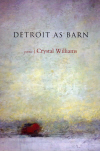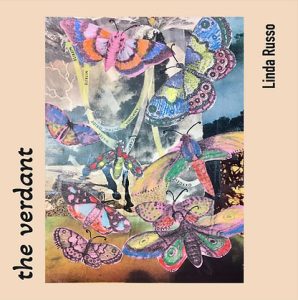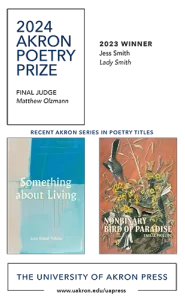Detroit as Barn
William Carlos Williams famously wrote, “It is difficult to get the news from poems.” However, Crystal Williams’s third book of poetry, Detroit as Barn, is lacking neither in news nor in difficult truths between the lines (between the minds) of those she writes about. Her poetry engages with the question of how to live with what changes and also with what stays uncomfortably the same, stuck in a rut. The collection is centered on real moments where history seems to sit on a struggling city and its people, yet there is also a central wonder throughout the book about the “life beneath this life,” a reminder that history is shimmering, that it is not one thing.
William Carlos Williams famously wrote, “It is difficult to get the news from poems.” However, Crystal Williams’s third book of poetry, Detroit as Barn, is lacking neither in news nor in difficult truths between the lines (between the minds) of those she writes about. Her poetry engages with the question of how to live with what changes and also with what stays uncomfortably the same, stuck in a rut. The collection is centered on real moments where history seems to sit on a struggling city and its people, yet there is also a central wonder throughout the book about the “life beneath this life,” a reminder that history is shimmering, that it is not one thing.
From the first lines of the first poem, “Extinction,” there is a sense of lives being foreclosed upon: “Like a diseased lung, the city is shutting down, / & the parks are first to go.” The narrator is walking with her dog through grass grown to weeds as trash “mysteriously appears & disappears.” They see a couple on a park bench, another zipping down the street—the woman sitting on her boyfriend’s “motorized wheelchair, a bony arm cradling her back.” The writer is struck by how “this broke-down park bench, / middle-of-the-empty-street love” stands out “amid the ruins.” The poem moves towards an imaginative remembrance of how the last Heath Hen may have endlessly trilled for a mate above this very park, where these human survivors now hang on to their own mates; but before arriving at this melancholic awareness, there is a sense of something else—a type of resilient indifference to the brokenness:
But these crazy lovers, in the weeded grass,
high on something, eyes full of magic,
some wispy memory, the life before this life,
the possibility of a perfect & rounded orange,
make me happy with their surprise
& stubborn headedness.
I was not surprised to read that prior to years of teaching at Reed College, Crystal Williams often performed at spoken word venues, because voice and spoken language matter in these poems. Yet, although a consistent narrative voice appears in many places, there are multiple points of view in Detroit as Barn. The long poem “Monologues from Detroit” has three voices, whose words or silence weave simultaneously in columns that span several pages. There is Judy, a dancer, whose Chinese grandmother refused to speak English and who is “showing you / the languages / of [her] house” when she dances; next is Kelly, described as ‘Daughter,’ who says “I am Black” and is keenly aware of her “heart’s city / & its unbearable ruin”; and the final column is a chorus of “Ancestors,” often quiet but advising: “accept // the alienation of // being / Other—” This poem impressed me for how well it transposed the feeling of an ancient oral tradition (which poetry, of course, is) onto the lyrical voices of two women trying to find their way in today’s urban America.
In addition to multiple points of view, something this collection often subtly and successfully engages in is a shifting sense of “other”—of someone being seen as “outside.” Histories of social position and race and class have a kaleidoscopic quality in several places. There is the elderly woman in “Feeding Detroit,” aware that young organizer types wish she’d move so they could turn her property, surrounded by abandoned land where neighbors once lived, into a “citified farm” of some type. Her past feels so pushed aside that she “longs to say, “Y’all’s ruptured, children. Your spirits & tongues / ain’t right. You shoulda been taught: to memories, a body bends . . . ” There is the beautiful and intense “People Close to You,” a contrapuntal four-part prose poem that builds around the image of a woman approaching “you,” asking “Sis, can you help?” She is a being who “emerges in tatters from a darker crevice no more than a crevice,” but “Get back, you say, fear seeding itself.” As the sense of who feels or has become “other” shifts in the poems, the collection becomes layered with lives and emotional experiences.
Several of the poems were clearly written from the poet’s personal experiences of losing family members. These poems feel intimate and direct; they paint portraits of remembrance and of the poet’s efforts to move on from grief. Reading the book straight through, I was struck by how these aspects of loss in a personal history were embedded with stories of loss and change on a collective level. In “Harbinger,” the lines seem to echo the challenge of naming both kinds of experiences: “there is no competent language for loss. / there is only how we sustain it.”
Two poems in the collection, “Idiom” and “The Way Home,” are presented on the page in undulating lines that usually have three to four phrases each and carry vibrant imagery from dreams. In the first, a “mute African woman” touches the speaker’s head with symbols on her hands; in the second, toward the end of the book, there is a whale (named Kyra) and
She tells me we are going home
& home is many tongues away beneath
another beneath which rests between the reefs of hunger
& hungering.
I appreciated the inclusion of these spacious, otherworldly-feeling dream scenes. Though written in taut phrases, they conveyed vast spaces. “The Way Home” faces “Detroit as Brewster Projects” on the next page, a poem that mentions how in this large housing development, “Danger & death / bloom, balance / in the wind.” Moving from one page to the next—from an expansive dream-world to a restrictive real one—I could feel a tightness in my throat, and that furthered my empathy, and anxiety, for those I imagined living in a constantly threatening place.
The wide range of voices and observations in these poems is presented without despair but with a clear-eyed compassion for the hidden elements often missed in news stories (as well as in much of today’s poetry). There are phrases, images, and encounters here that will linger long after you have turned the page.





